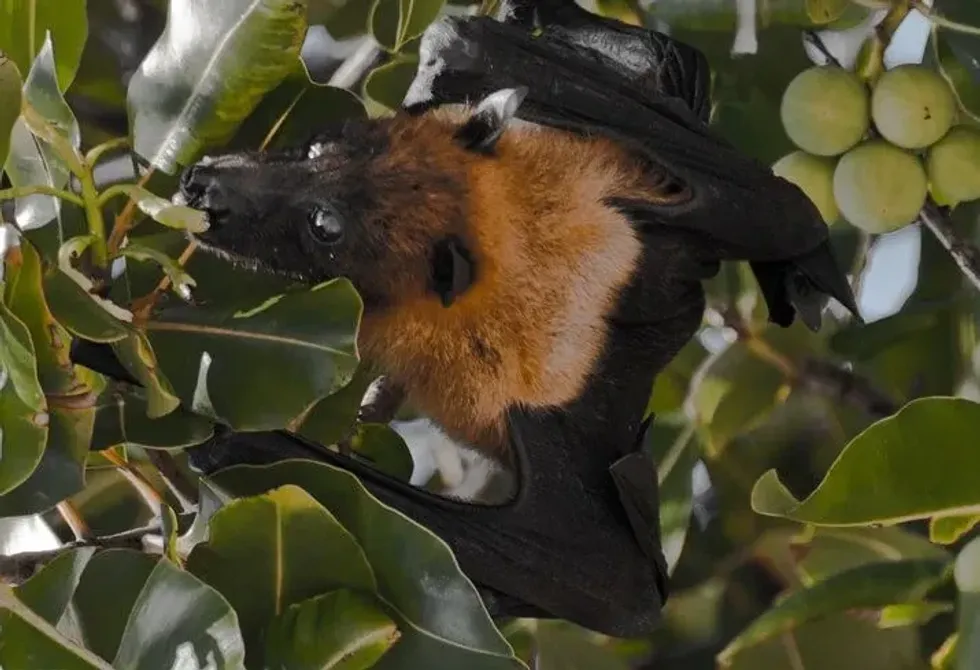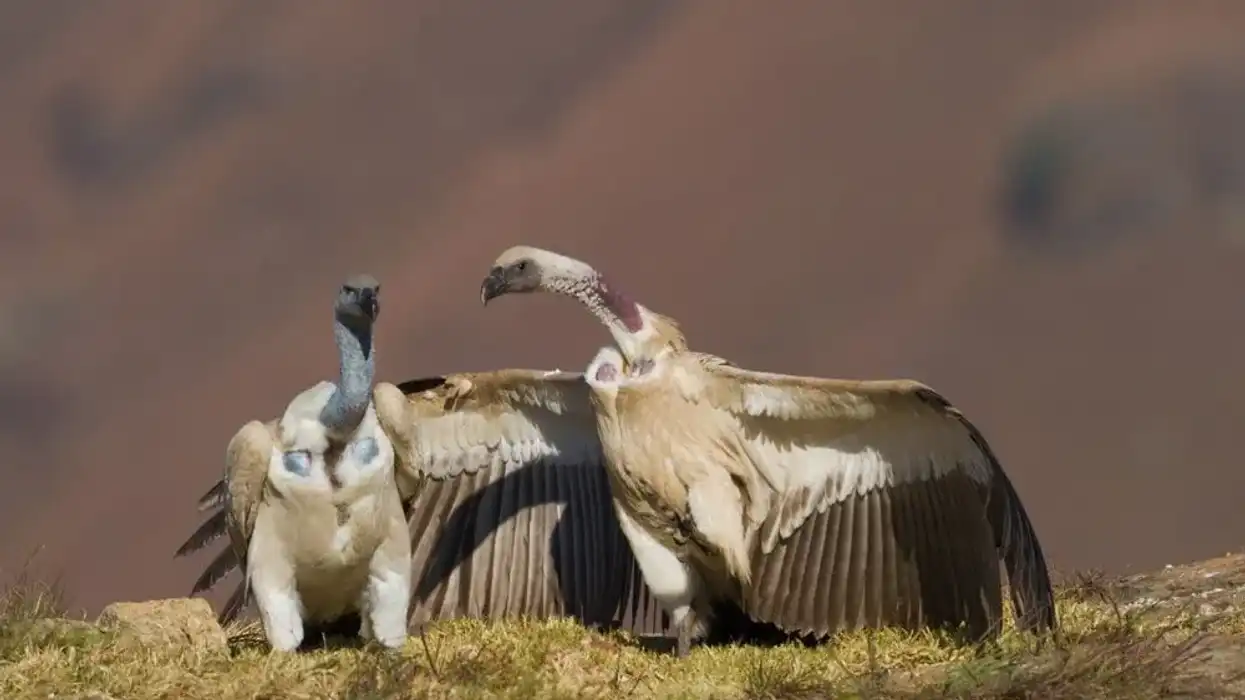We have all seen a bat and man duo but have you ever seen a fox and bat duo? Well, the Pemba flying fox is a bat that resembles the face of a fox, hence the name.
It belongs to the Old World fruit bats family as its diet mainly consists of fruits and plants. It is the sole bat species that are endemic to Africa (Island of Pemba).
The most shocking news about this bird is that its population faced a drastic decline in the same year when shotguns were introduced. The conservation status was declared as Critically Endangered and it was just a few steps away from becoming Extinct.
However, the was a sudden rise in population after banning the local use of shotguns for hunting on the Pemba island.
To learn more, we have collected a set of interesting pieces of information about this fascinating creature for you to read. You can also learn more by reading more articles on the megabat and ghost bat.
Pemba Flying Fox Interesting Facts
What type of animal is a Pemba flying fox?
The Pemba flying fox is a type of fruit bat of the Family Pteropodidae also known as old world fruit bats.
What class of animal does a Pemba flying fox belong to?
These fruit bats endemic to the forests of Pemba island belong to the Mammalia class of the Animalia kingdom.
How many Pemba flying foxes are there in the world?
The population of the fruit bat has drastically increased since 1989 when it was at the point of extinction as a result of the destruction of forest habitat, which was at the time more than 90%. Their population started increasing in the next few years.
As per an estimation made in 2006, the current population is said to be between 22000-36000 individuals.
Where does a Pemba flying fox live?
This species is found in the primary forest regions of southeast Asia and Australia. They are commonly spotted along the western Indian ocean and are absent in the mainlands of Africa. These species inhabit the coast of Tanzania and Pemba island.
What is a Pemba flying fox's habitat?
The Pemba flying fox habitat range includes forests with large trees. Large roosting colonies inhabit the primary forest, traditional graveyard, secondary forest, and mangrove surroundings. You can also observe them in caverns. But roosts discovered in large trees considerably surpassed the number of roosts in caves.
Who do Pemba flying foxes live with?
These fruit bats live in small or large colonies. Many colonies were observed in roost sites. Since they are always found in groups they don't have to worry about being attacked by predators.
How long does a Pemba flying fox live?
This species can live up to 28 years. However, their lifespan mainly depends on the environment and they are thought to live the longest in captivity. The bats survive in the wild for up to six to seven years.
How do they reproduce?
These flying fruit bats are viviparous that reproduce by giving birth to offspring. The Pemba flying fox is usually said to have one progeny every year which has been further delayed and unsuccessful due to lack of proper nesting sites.
The reproduction is completed between June and August. The average gestation period is 152 days.
Just like all other bats this fruit bat also gives birth while hanging upside down. The adult female tightly grips its talons on branches of large trees forming a U shape. It then proceeds to push the baby out of her womb.
Right after birth, it is said to lick the pup's head. The offspring clings to its mother and flees only after a few months.
What is their conservation status?
As per the IUCN Red List, the conservation status of Pteropus voeltzkowi is vulnerable (population increasing). This was not the case 20 years ago.
There was a decline in their population which almost lead to extinction and were said to be Critically Endangered mainly because of hunting by local people of the island of Pemba and forest clearance. Due to proper care, their distribution is becoming widespread.
Pemba Flying Fox Fun Facts
What do Pemba flying foxes look like?
Pteropus voeltzkowi has a face similar to that of a fox. They are orange and black in color. The ears, feet, wings ad front part of the face are all black. The rest of the body appears to be auburn but is orange when exposed to sunlight.
The body is covered with thick fur. They have sharp talons and large black cloak like wings that are webbed which spread up to 5 ft3 in (1.6 m). This species has dark brown eyes.
How cute are they?
These bats are said to be the cutest while hanging on forest trees. Their auburn orange fur is quite unique.
How do they communicate?
They are one of the few bat species that have strong visual communication abilities. Hence they do not use echolocation. They are very vocal bats and communicate by using their voice.
How big is a Pemba flying fox?
The Pemba flying fox bat size is 9.4-10.4 in (24-26.5 cm). Wingspan measurement (Pemba flying fox) is 5 ft 3 in (1.6 m)
How fast can a Pemba flying fox move?
All flying foxes can fly at a speed of 13 mph (6 m/s). The maximum speed of travel can extend up to 19 mph (98.6 m/s).
How much does a Pemba flying fox weigh?
This species weighs between 0.9-1.4 lb (0.4-0.65 kg). It is 63 times bigger than Kitti's hog nosed bat.
What are the male and female names of the species?
The male and female species do not have special names. They are both called the Pemba flying fox.
What would you call a baby Pemba flying fox?
The baby Pemba flying fox does not have a specific name.
What do they eat?
The Pemba flying fox diet consists of plants, flowers, fruit, seeds, flowers, nectar, leaves. They live in large roosting colonies to avoid predators like pythons, crocodiles, goannas, owls, and sea eagles.
Are they dangerous?
Needless to say bats are dangerous as they carry a lot of viruses which can be very harmful.
Would they make a good pet?
Absolutely not. It is better to admire these bats from a distance. They are known to spread a variety of viruses. It is also advised that people who lack training and have not been vaccinated must keep away from them. Common people, shouldn't make an attempt to help an injured flying fox.
Did you know...
This is the only bat species endemic to Africa.
They are loudest during the breeding season. This is to keep away other birds or bats from entering their territory.
Bats, especially the fruit bat contribute a lot to the ecosystem by helping in the pollination process and widespread distribution of seeds of many plants.
Is the Pemba flying fox endangered?
The conservation status of the Pemba flying fox is Vulnerable (population increasing). In the year 1990, these birds were critically endangered and said to be on the verge of extinction. Hunting and forest clearance have been the major reasons for the decline of distribution. They were hunted by the local people using traditional methods as well as shotguns.
The international Flaura and Fauna organization took a range of measures to curtail hunting. Various wildlife organizations also came together to help preserve this species. The local people (Pembaris) have now taken a liking to this bat and contribute greatly to its conservation.
They also restricted forest clearance in the natural habitat of these bats. Since then their population has been constantly growing.
How did Pemba flying foxes get their name?
Their name Pemba flying fox was given due to the charming fox like face. They are named after the Pemba island since they are only found in Pemba island off the coast of Tanzania.
Here at Kidadl, we have carefully created lots of interesting family friendly animal facts for everyone to discover! For more relatable content, check out these hoary bat facts and Mexican free tailed bat facts pages.
You can even occupy yourself at home by coloring in one of our free printable Pemba flying fox coloring pages.
Second image by Marcel Oosterwijk.









